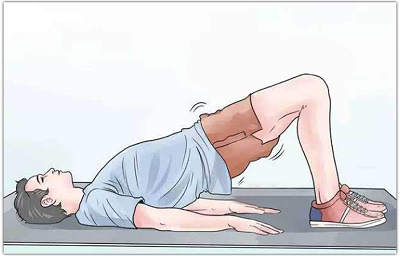How Effective are Kegel Exercises in Managing Split Urine Stream Caused by Prostatitis?
Kegel exercises, also known as pelvic exercises, were introduced in 1948 by American doctor Arno Kegel and is performed by repeatedly scaling portions of the pelvic muscles (also known as "Kegel's muscles"). Tools have been invented to aid in this movement, but many are ineffective. In women, Kegel exercises are often used to reduce urinary or postpartum urinary incontinence. But Kegel exercises are not exclusively limited to women. Men can also practice Kegel exercises to help treat related diseases.

Does kegel exercises treat split urine stream caused by prostatitis?
The split urine stream is a common symptom of urinary diseases, such as prostatitis and urethral infections, mostly caused by different degrees of obstruction of the urethral opening. During prostate inflammation, inflammation stimulates the increase of prostate secretions.
When secretions are discharged through the urethral orifice, some will adhere to the urethral orifice to cause obstruction, resulting in changes in the shape of the urethra opening and then generating a split urine stream.
Kegel exercises are generally referred to as anal lifting exercises, which have certain benefits for prostatitis and can promote local blood circulation and relieve pain.
Prostatitis refers to the acute or chronic inflammation of the prostate, which is one of the common diseases in andrology, and it is generally associated with sedentariness and improper hygiene. Primary symptoms include frequent urination, urgent urination, pain, and urine retention, but they are accompanied by abdominal and perineal pain, which can result in general fatigue. Kegel exercises can relax the muscle, relieve local pain, and has certain benefits to the condition.
Kegel exercises can also strengthens men's pelvic floor muscles to support the bladder and intestines better and improve male sexual function. Regular contraction of the anus, like a good massage of the prostate, can promote the blood flow of the male prostate so that its congestion is reduced and the inflammation is subsided, facilitating prevention and auxiliary treatment of prostate diseases and then helping alleviate male prostatitis caused by a split urine stream.
While making Kegel exercises, there are some issues to be cared for.
Firstly, find the correct muscle position: urine flow interruption method
Try to hold in the flow of urine when you urinate. If the flow stops, it suggests that you have found your pelvic floor muscles. (This exercise aims to help you locate the pelvic floor muscles accurately. Do not perform this exercise during urination and when the bladder is full, as this can weaken the pelvic floor muscles and even lead to a urinary tract infection.)
Once you find out where your muscles are, you can start working in various positions; of course, the most accessible posture is lying down.
Secondly, specific methods: consciously contracting and relaxing pelvic floor muscles
It is necessary to feel the contraction and lift of the pelvic floor muscle during lifting, like an elevator ascent process; hold the contractions for 10 seconds, and if you have trouble, do it for 5 or 3 seconds to start.
As you relax, you should feel the dropping and stretching of the pelvic floor muscles. You must breathe deeply and relax sufficiently to prepare for the next contraction.
The specific frequency should be arranged according to your own time and ability, gradually increasing and reaching ten times per group and three groups per day.
When you feel your muscles are gaining strength, switch from lying down to standing, sitting, walking, etc.
In addition to regular training, you can also carry out quick contraction and release and endurance training. Fast-release training means you can accelerate the contraction movement to contract and release irregularly for ten reps per group. Endurance training is to tighten the pelvic floor muscles and hold on as long as possible within 2 minutes; after contraction, be careful to relax completely. You can relax with abdominal breathing.
You may also be interested in:
Prostatitis Treatment: The Benefits of Yoga and Meditation
Unlocking the Power of Natural Therapies for Prostatitis Treatment
Current Situation and Progress in the Treatment of Prostatitis



